Learn how to wash wool the right way so that your fleece is clean and fresh without matting or felting. Following these easy steps will ensure that your local fleece is ready for hand spinning or other fiber arts projects efficiently, when local wool is the best wool for your project.
Commercial roving is lovely. It’s perfect. Commercial production takes hundreds of individual fleeces, washes them together, picks them into a uniform mass and cards them. Often the carding process is taken one step further, and the wool is pin-drafted to take out all the short fibers, noils and veggie bits. The result is a perfect, uniform, rope ready for felting or spinning. Like grocery store hamburger, you know what you’re getting and it’s consistent every time. It’s rarely local. Your relationship is with the seller, not the manufacturer or the grower. That’s the price of perfection. At least when you buy commercial roving, you aren’t anticipating recalls, like with hamburger.
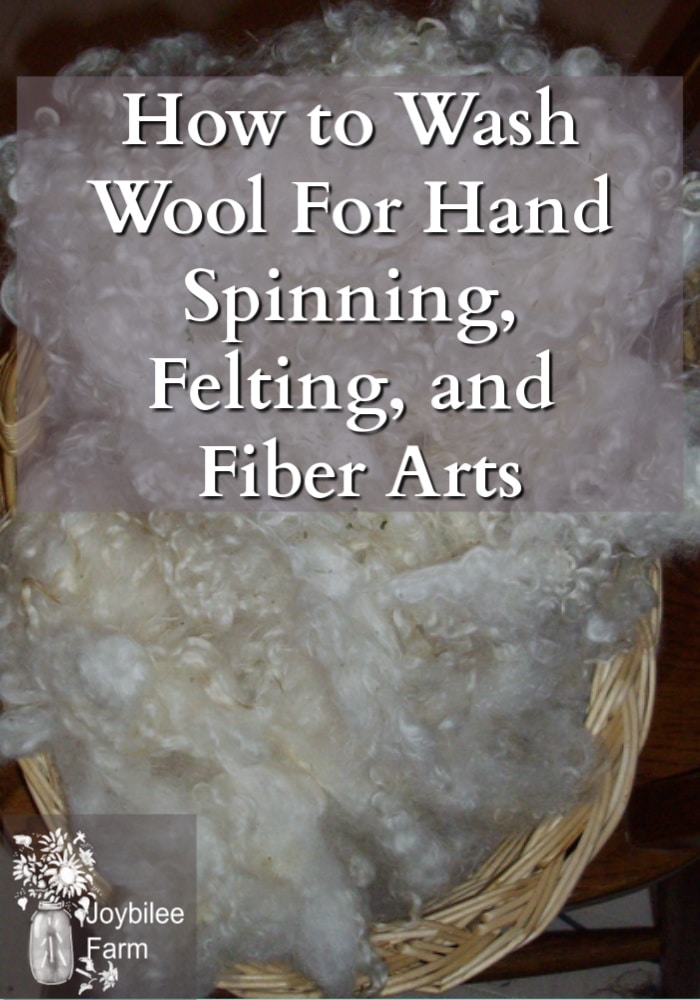
Sometimes, you want to experience real wool. You want to smell the grease. Wash it with your own hands and dream of a project that uses the best qualities of an individual sheep — its luster, its crimp, its color variation, its strength or softness. Or you just want to save some cash in support of your hobby.
Wash wool fleece the easy way
Here’s how to wash wool the easy way, so that you can enjoy your fleece and prepare it for spinning or felting. Whether you sheared your own animals or bought a fleece from a local producer learning how to wash wool fleece can make you independent of the overseas wool suppliers and yarn manufacturers. It can also unleash your creativity and give you many more choices for knitting yarn, weaving yarn or even felting wool.
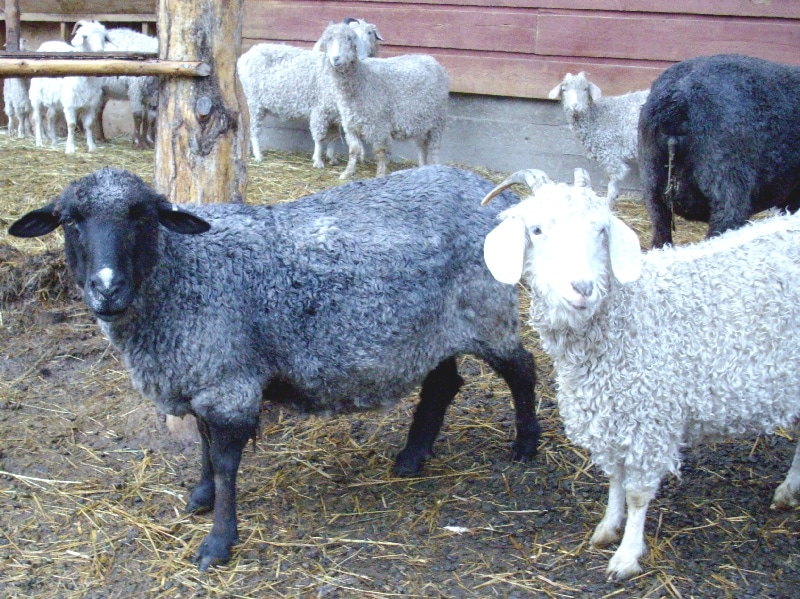
1. Skirt the fleece.
Do this part outside. Lay out the fleece. If it was rolled you will just unroll it and open it up. Check to see if its was skirted thoroughly. The shepherd should have taken all the poop-y bits away from the perimeter of the fleece at the sorting table. If not, take the outside 3 or 4 inches and pull them away from the fleece with your hands. Save these for the bottom of your planters (releases nitrogen and keeps pots from drying out).
2. Remove any parts of the fleece that are heavily contaminated with vm (vegetable matter).
Sometimes the neck and top line are heavily contaminated with hay bits and other vm so add these to your plant pots or save for garden mulch. Again, the shepherd may have already done this for you if they skirted the fleece on shearing day.
3. Shake your fleece outside.
If you are going to process a lot of fleeces you might want to build a wool sorting table. That’s a table with an opening (slats or wire mesh) that will let the junk fall out of the fleece as your shake it. If you don’t have a sorting table then grab handfuls of fleece and give them a good shake. You want the small bits, dust and vm to fall out on the ground before getting into washing the wool. Place the shaken fleece in a basket ready for the wash.
In the 70s it was cool to spin in the grease, and sheep to shawl competitions often still do so. This is the point when you would do this, if you wanted to. Its not my preference. Just saying….
4. How to wash wool
Do this outside, if you can. If you use your indoor washing machine or bath tub, it gets a bit messy. Fill a wash tub, washing machine or bath tub with really hot water (120F). Add 1/2 cup washing soda, 1/2 cup. dish detergent, 1/2 c. Simple Green (optional). Stir in to dissolve completely. Add wool, by pushing down into the water. Use a stick so you don’t burn your hands. Cover tub with a lid or tarp to hold in the heat, if you are doing it outside. Leave it for 30 min. to 1 hour.
Lanolin dissolves at 120F and re-congeals at 110F, so you want to keep the water hot to allow the lanolin to dissolve from the fleece, as well as the sheep sweat, so that it will rinse away.
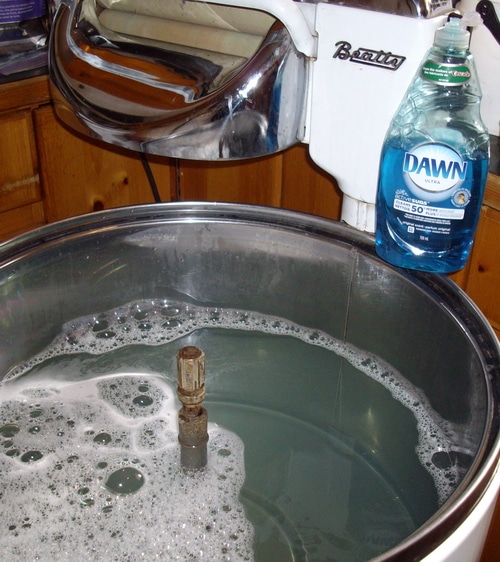
5. Rinse the fleece.
Drain the tub. Remove fleece. Refill with clean, hot water (120F). Put the fleece back in. Cover again to retain heat. Soak for 30 min. to 1 hour, without agitation. As long as you don’t agitate the fleece, you will not felt it.
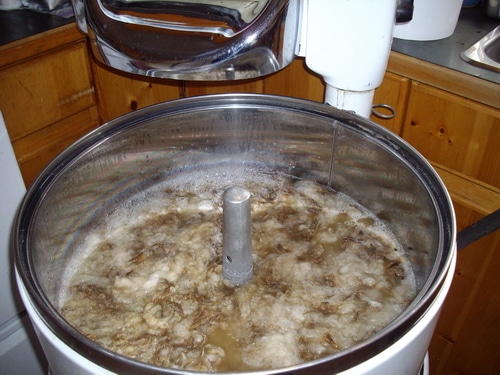
6. Rinse as needed.
Repeat step 5 until the water that the fleece is soaking in stays clear. At that point remove fleece from water. If you have more wool to wash – put them in this water and add soap and washing soda.
You can reuse this water on garden plants or lawns — but bring the pH of the water to 7 before reusing it and allow it to cool. Dish detergent is high in phosphorous — it’s not organic.
7. Drain fleece and remove excess water.
I have a wringer washer that will squeeze out the excess water. You can put it into a centrifuge to spin, or use a top load washing machine to spin out the excess water. Put fleece on a drying rack or in a basket somewhere warm to dry. Turn fleece several times during the drying time. Don’t package it away in plastic bags until it is thoroughly dry. Wool can seem dry when it is still quite damp.
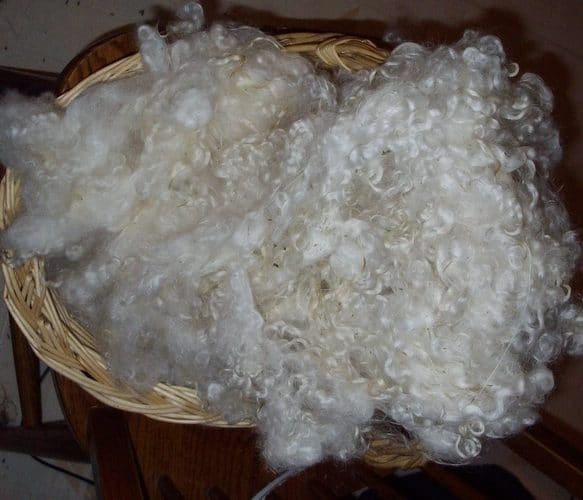
8. Pick the fleece.
Pick your fleece with your hands as its drying to open the locks and let remaining chaff fall out. Once it is thoroughly dry, willow the fleece with sticks to open the locks, too, or put the fleece through a mechanical picker. Once the fleece is picked you can spin from the picked locks. Or you can card it on a drum carder, with hand cards or flick comb it with a flicker brush, to get it ready to spin or felt. Sometimes I pick the fleece, as I’m putting it through the drum carder.
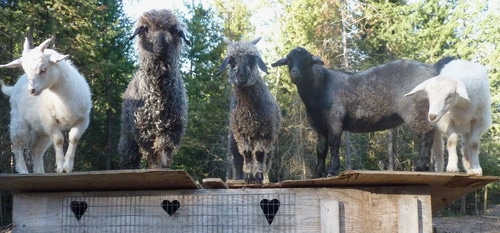
Which breeds of sheep are best for handspinning?
Some spinners suggest that life is too short to work with dirty fleece. I recommend learning this skill, even if you generally start with prepared roving. The number of breeds of sheep available in commercial roving is shrinking annually. Merino and corridale — both fairly soft fleeces, dominate the market. Stronger fleeces — used for carpets, upholstery and outer wear are losing market share. So if you want to weave a rug, a blanket, or a coat you end up with poor wear-ability using commercial rovings.
Being skilled at washing your own fleeces allows you to use what’s available locally. You gain a relationship with local producers and you may even be invited to help on shearing day — giving you the first pick of the best fleeces available in your community.
You can also buy raw wool to help support the conservation of heritage breeds that are in danger of disappearing due to the breed uniformity required for mass production.
When I was first learning to spin, before we had sheep, I was invited to help at a local sheep farm on shearing day. I was rewarded with my choice of fleece — and then found that half the fleece had been placed in my car. One fleece will give you a lot of spinning and knitting mileage. As well as hours of kid entertainment if you can convince them to wash it lock by lock with a bar of soap.
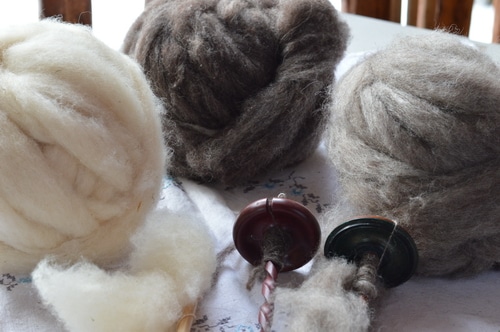
Books to teach you more
Here’s two valuable books that talk about raising fiber animals and using their fleece
Raising Animals for Fiber: Producing Wool from Sheep, Goats, Alpacas, and Rabbits in Your Backyard
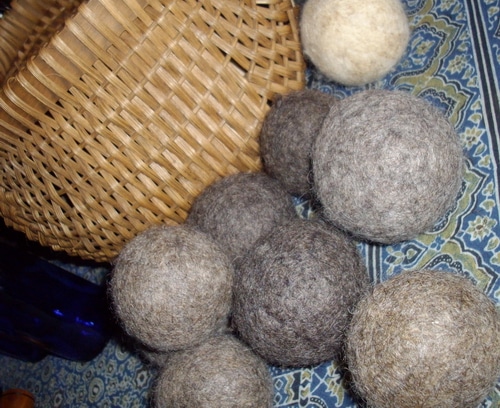
Easy felting Project
Now that you have clean fleece make these felted dryer balls so you can use less electricity in your home, save money, and avoid toxic dryer sheets. Wool dryer balls are a quick project that you can make in under an hour. Here’s the tutorial for felted wool dryer balls.



I’m looking for some direction on how to clean a large dream-catcher that is made of a mix of materials – fur, feathers, beads and sheep’s wool. This beautiful piece has been collecting dust for many years and it’s really starting to show on the long parts like tails or tassels that hang down. I mistakenly tried vacuuming those and it just resulted in strands of wool coming away from the rest. Any ideas??? I tried to attach a photo but it doesn’t seem possible. Thanks for any help you can offer!
You need hot water to melt the lanolin and fleece wax to remove it from the wool. Provided there is no agitation the wool will not felt. But you must be careful that the water is turned off, and the rinse water temperature should be as close as possible to the wash water temperature so that the wool is not shocked.
Hello. I’m interested by your post here; I assumed such a high temperature would felt the fleece. How does it not?
Hi, I have a small farm and raise cotswold sheep. I wash and sell our wool. I use Unicorn Fiber power scour when I wash. I LOVE it. Also I tend to sell my nice fleeces and tackle the tuffer ones myself. For stuck on bits or higher VM. I use the unicorn rinse in a lukewarm water and use a fine comb like a pet flea comb or lice comb and comb the wool underwater starting at the tips. The VM usually works out really well. Then hang dry it.